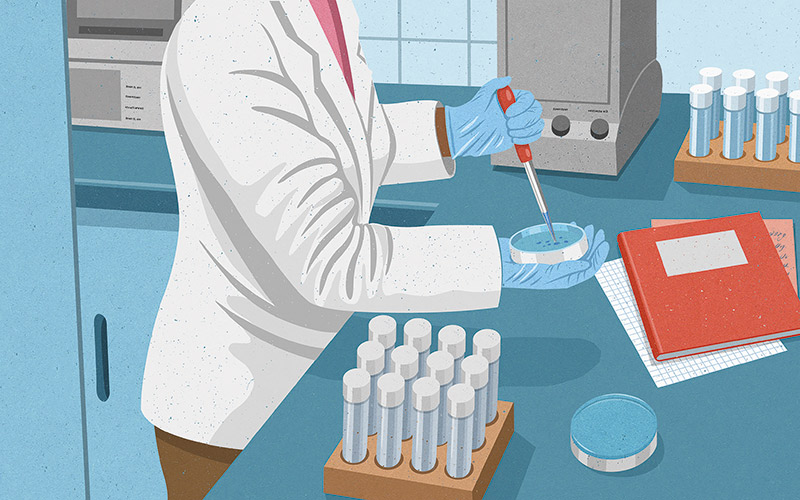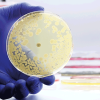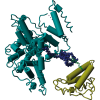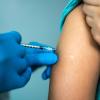Tracey Warnett, Teaching Technical Manager at the University of Bradford, on her experiences of returning to the bench.

The dawning of 2020 saw unprecedented pressure on the NHS as the SARS-CoV-2 virus swept the world impacting our resources like never before. Many former NHS staff answered the “call to arms” and I was one of them. I am Tracey Warnett and I work as a Technical Manager at the University of Bradford, where I have blissfully been for the last six years since leaving my 29-year career as a Chief Biomedical Scientist in Clinical Biochemistry.
My HCPC registration had lapsed less than three months previous, so I was added to the emergency register. I offered my services to my local hospital, Bradford Royal Infirmary, should I be needed, with permission of the university. I knew staff and management there through my professional networks and they were aware of the competencies I possessed.
I arrived at the hospital at the same time that Trudy Bell, who took a lead in the microbiology laboratory, went off sick with COVID. She happens to be my sister and I wasn’t sure just how we would get on working together, as our professional paths had never crossed. However, the agency staff, Rebecca Shepherdson, was well trained, the addition of Zain Jahangir and the return of the very experienced Biomedical Support Worker Debbie Barrett completed our little team well and we persevered until Trudy’s return.
Samples start arriving
The number of swab samples arriving in the lab was phenomenal. These were numbered, documented on an Excel spreadsheet, scanned, photocopied and sent to the larger sister hospital at Airedale for analysis. The process was time consuming and filling in the spreadsheet was prone to mistakes as all entries were manual. I learned the process and did what I could to streamline and reduce the steps involved, which took some time and persuasion of hospital management by Sarah Hird, the Operational Manager, but we got there. I also had to be mindful that I was a visitor in someone else’s lab. I must stress that the spreadsheet was for internal use only to monitor trends and had no impact on the patient results or treatment.
“There were several lightbulb moments that had evaded me for almost two decades”
Next was to verify, validate and introduce the GeneXpert PCR analyser for rapid SARS-CoV-2 analysis on the Bradford Royal infirmary site. Being a clinical biochemist my knowledge of PCR was filed away in the MSc in Pathological Sciences galaxy far, far away, so I spent some time researching and refreshing my knowledge. There were several lightbulb moments that had evaded me for almost two decades. As analysers go, the GeneXpert was well behaved and easy to operate and maintain. Set up and approval by the company was interesting as we had to perform this remotely on my mobile phone, wrapped in a specimen bag, for health and safety reasons. I learned how to interpret the results to produce a training presentation and competency documentation, which was easy to understand by all staff involved. In three months I was able to do the background research, complete the validation and verification work, train 78 staff from five disciplines and complete documentation to satisfy UKAS requirements.
I was also able to assist the existing support staff with training further staff and helping them to write a roster, which they had not done before – this enabled service provision 24/7.
A hundred years of experience
My old colleague, Chris Hughes – the retired Haemostasis Chief from Leeds, who was also called back during the pandemic to validate, introduce and train staff on Anti Xa A assays – and I were asked back for a second stint in January 2021 to perform further validation and verification work on a combined respiratory panel for the Cepheid GeneXpert and also on the Abbott ID NOW, DNA Nudge and DWR SAMBA II platforms. This led to us training the emergency department staff in how to use the ID Now.
We enjoyed working together again in the place where we first crossed paths back in 1986 when I was a student and Chris a Senior Medical Laboratory Scientific Officer. We worked alongside our old colleague and friend Sarah Hird who we had both worked with at Leeds Teaching Hospitals Trust and again at Mid Yorkshire Hospitals Trust for me. We had 0ver a hundred years of biomedical science experience between the three of us!
We enjoyed sharing our knowledge with others whilst having some fun, laughter and serious lab work. On the whole, we were well behaved and respectful of the fact we were visitors to the labs. I did, however, have a reputation for being a stickler for lab etiquette and lab coats were fastened and hair tied back at all times (elastic bands were always to hand).
What happened next
We were made very welcome by the resident laboratory staff, from all disciplines and Chris and I enjoyed doing what we loved about the job before the roles of the Chief changed – bench work. Whilst we worked outside of our usual disciplines, we did a respectable job. We remembered procedures and practices and, most importantly, the patient. UKAS later accredited the service, which was a source of pride us both.
We gained a lot from our time together, we supported the service out of hours, spent the night in the hospital when snow brought the city to a halt and consumed our combined body weights in tea and tiffin, but I finally went back to the university to support my marvellous technical teams in Biomedical Sciences, Chemistry and Archaeological and Forensic Sciences. Chris went back to retirement and fishing, Sarah moved onto a role in NHS England, Rebecca obtained a permanent role within the lab, Zain went to The Doctors Laboratory and Debbie and my sister remain at the hospital providing an excellent service. Until the next crisis…
Image credit | IKon




